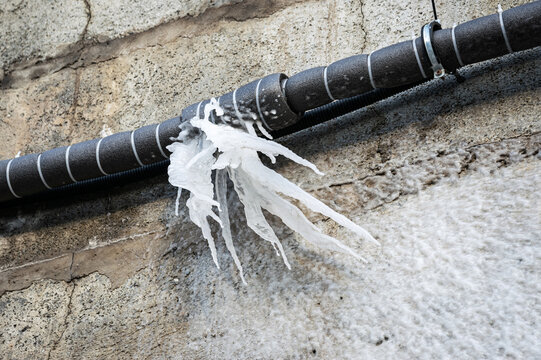Essential Advice for Preventing Frozen Pipes in Cold Weather Conditions
Essential Advice for Preventing Frozen Pipes in Cold Weather Conditions
Blog Article
What are your thoughts regarding Preventing and dealing with frozen pipes?

Cold weather can damage your pipes, specifically by freezing pipelines. Right here's exactly how to stop it from happening and what to do if it does.
Intro
As temperatures decline, the danger of frozen pipes increases, potentially resulting in costly fixings and water damage. Recognizing exactly how to stop icy pipes is important for house owners in cold climates.
Comprehending Icy Pipelines
What causes pipes to ice up?
Pipes freeze when subjected to temperatures listed below 32 ° F (0 ° C) for prolonged durations. As water inside the pipelines ices up, it broadens, taxing the pipeline walls and possibly causing them to burst.
Risks and problems
Frozen pipes can cause supply of water interruptions, property damage, and costly repair services. Ruptured pipelines can flooding homes and create extensive architectural damages.
Indications of Frozen Pipeline
Determining icy pipelines early can stop them from breaking.
How to identify icy pipelines
Try to find reduced water circulation from taps, uncommon smells or sounds from pipelines, and visible frost on subjected pipes.
Prevention Tips
Protecting prone pipes
Wrap pipelines in insulation sleeves or make use of warmth tape to safeguard them from freezing temperatures. Concentrate on pipelines in unheated or external locations of the home.
Heating strategies
Maintain interior rooms adequately warmed, especially locations with plumbing. Open up cupboard doors to enable cozy air to flow around pipelines under sinks.
Shielding Outdoor Pipes
Yard hoses and outside faucets
Disconnect and drain garden tubes prior to wintertime. Set up frost-proof spigots or cover outside taps with protected caps.
What to Do If Your Pipelines Freeze
Immediate actions to take
If you think icy pipes, keep taps available to ease stress as the ice thaws. Use a hairdryer or towels soaked in warm water to thaw pipes slowly.
Long-Term Solutions
Structural adjustments
Think about rerouting pipelines away from outside wall surfaces or unheated locations. Add extra insulation to attic rooms, cellars, and crawl spaces.
Upgrading insulation
Purchase top quality insulation for pipes, attics, and wall surfaces. Correct insulation helps maintain constant temperatures and lowers the danger of frozen pipelines.
Final thought
Avoiding frozen pipes calls for proactive steps and quick reactions. By understanding the reasons, signs, and preventive measures, homeowners can protect their pipes throughout winter.
6 Proven Ways to Prevent Frozen Pipes and Protect Your Home
Disconnect and Drain Garden Hoses
Before winter arrives, start by disconnecting your garden hoses and draining any remaining water. Close the shut-off valves that supply outdoor hose bibs and leave the outdoor faucet open to allow any residual water to drain. For extra protection, consider using faucet covers throughout the colder months. It’s also important to drain water from any sprinkler supply lines following the manufacturer’s directions.
Insulate Exposed Pipes
Insulating your pipes is an effective way to prevent freezing. Pipe insulation is readily available at home improvement stores and is relatively inexpensive. Pay close attention to pipes in unheated areas such as the attic, basement, crawl spaces, or garage. Apply foam insulation generously to create a buffer against the cold. You can also wrap your pipes in heat tape or thermostat-controlled heat cables for added warmth.
Seal Air Leaks
Inspect your home for any cracks or openings that could let in cold air. Seal any holes around the piping in interior or exterior walls, as well as the sill plates where your home rests on its foundation. Additionally, make sure to keep your garage door closed unless you’re entering or exiting. Leaving it open creates a significant air leak that can lead to frozen pipes.
Allow Warm Air Circulation
During cold snaps, it’s essential to allow warm air to circulate evenly throughout your home. Leave interior doors ajar to promote better airflow. Open kitchen and bathroom cabinets to help distribute heat consistently around the rooms. If you have small children or pets, be sure to remove any household chemicals or potentially harmful cleaners from open cabinets for safety.
Let Faucets Drip
A small trickle of water can make a big difference in preventing ice formation inside your pipes. When temperatures drop significantly, start a drip of water from all faucets served by exposed pipes. This continuous flow helps prevent the water from freezing. Additionally, running a few faucets slightly can relieve pressure inside the pipes, reducing the chances of a rupture if the water inside does freeze.
https://choateshvac.com/6-proven-ways-to-prevent-frozen-pipes-and-protect-your-home/

Do you really like reading up on How to Prevent Your Pipes From Freezing? Post feedback down below. We would be delighted to hear your suggestions about this posting. We are looking forward that you come back again soon. Sharing is nice. Helping others is fun. Many thanks for taking the time to read it.
Click Here Report this page